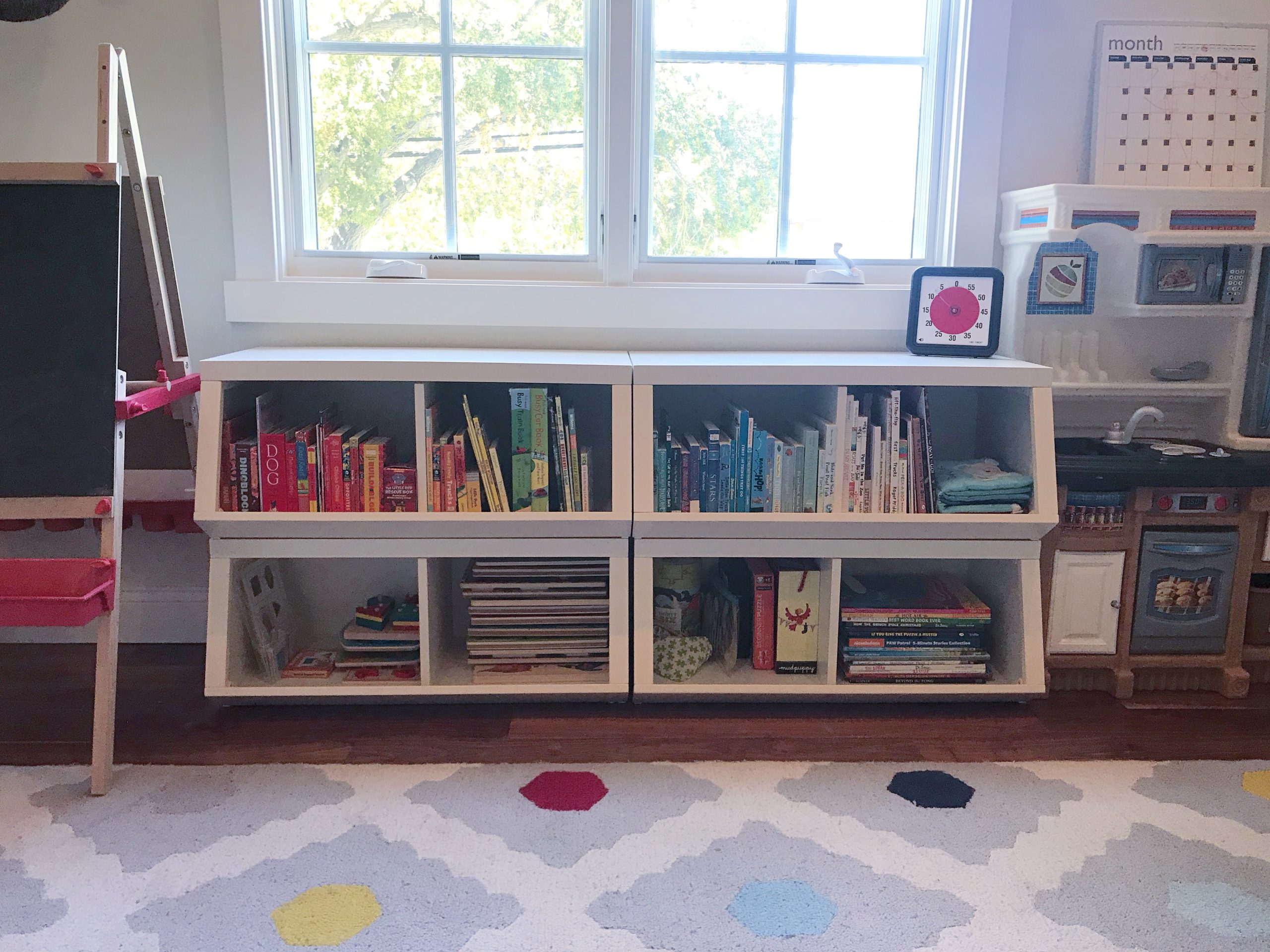
12 Feb Tips for Organizing Kids Books
There’s nothing I love more than children’s books!
I loved them when I was little and I still love them today as an adult. It might also be why I’m working on my own kids book series on organizing (7 manuscripts of 20 titles written – stay tuned for more).
I loved going to the library and checking out books as a kid. I loved their smell and the crinkly film used to cover them. And to this day, I love gifting books to kids of all ages, rather than toys or gadgets. There’s nothing like getting lost in a great book, no matter your age!
One thing I feel parents can never have enough of are children’s books. We want to limit screen time for little ones, and so it will always be important to have printed books for kids. Books also help kids build their vocabulary, understand shapes and colors, learn little lessons, and even build their hand-eye coordination skills with turning pages and interacting with “touch me” or pop-up books.
But kids see books differently from the way adults see them. Children are more familiar with the picture on the cover of a book, where as we as adults focus on the writing on the spine.
That’s why kids have a hard time keeping their books tidy, but here are some helpful tips to use that will help your child keep their books tidy and have that organized look.
First and foremost, always make organizing a fun game!
Kids will enjoy it more if it’s something fun, rather than a tedious chore. You can set the timer for 30 seconds and race against each other to see how many books you can pick up. Set a new personal best record with each time you tidy and get them excited.
You can ask one child to pick up all the red books, and another child to pick up all the blue books, building on their color recognition. And you should always help them with tidying initially, until they know how to do it on their own.
You can start with children as young as 1-year old, asking them to bring you a book and then you show them out to put it on the shelf. If you have a child under 1-year old, narrate to them as they watch you put the books back on the shelves so they can understand what you are doing and why. They will learn by watching you.
Second, use the rainbow method!
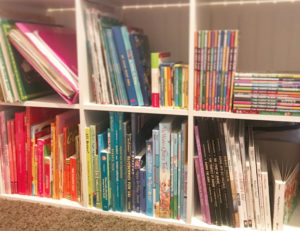
As I’ve already mentioned, children aren’t yet reading the spines of books, and sometimes have a harder time putting books away based on size (heck, I even know some adults who struggle with this). Instead, put books back on the shelf in rainbow order and help them keep the books tidy by putting books back by color. It doesn’t have to be perfect, but doing it by color helps them both learn colors and how to keep their books tidy. Kids and parents alike love how it looks.
I’ve even had my adult clients organize their books in rainbow order. They say it makes them super happy every time they look at their bookcase. And who couldn’t use an extra daily dose of happiness?
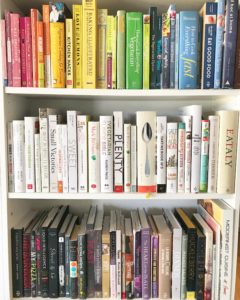
If the rainbow method doesn’t work well for your child (color blindness could be a problem for those trying to organize in rainbow order), consider a bookcase like this, designed to help kids find books based on their covers and not the spines.
There are a lot of options from Pottery Barn Kids, including the Madison (also in a 4-shelf option) and the Sloan. Of course, you can find these bookshelves elsewhere (Target, Walmart, Amazon, Wayfair, IKEA, etc.) This may limit how many books you can have out at one time, but think like a librarian or teacher and curate the books, switching them out by season or theme. You can store others in another area of the home, a closet or another traditional bookcase.
A fun IKEA hack I’ve done with a client is to use these spice racks (flisat or bekväm used below) for books in a reading nook.
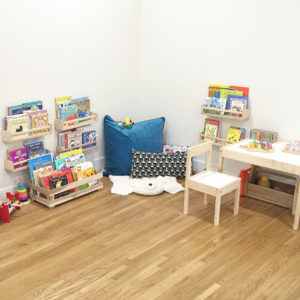
Third, set your kids up for success!
This is a two part step. First, you will need to show them how to do this several times before you can expect them to do it on their own. Do it with them, not for them.
Second, build in a few minutes each day to tidy the books and pull just a few for bedtime. I’ve seen kids as early as 12-months help put items away, even if it’s just handing you the book to put on the shelf. They learn by watching you but also when you share out loud what you are doing. Start as young as you can and build the skills as they grow. Encourage older kids to interact and teach the younger kids. Build the tidying habit of just a few minutes a day, and it will become second nature for them.
BONUS tip:
When gifting books, I highly recommend using a bookplate for your personalized inscription (that can be easily removed without ripping out an entire page) or putting your note in a greeting card instead.
The reason why is I help clients donate books all the time, and we either have to use a sharpie to block out the messages, or tear out a page before donating to the library. Many inscriptions are written on the inside cover, and others on the title page, so we can’t remove them. Some libraries won’t take books with personal inscriptions. This is why writing your personalized note on a card or bookplate is a better option.
Do you already use these methods or do you have a different technique to share? If so, please do so in the comments below.
Having trouble keeping your kids organized? Let me know what areas you’re struggling with and I’ll write a blog with helpful tips!
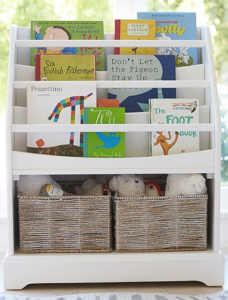
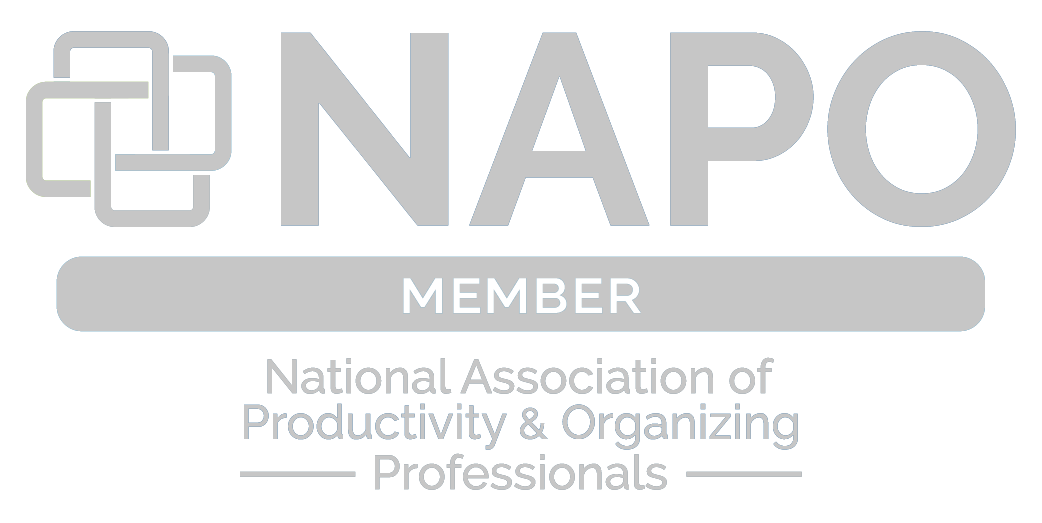
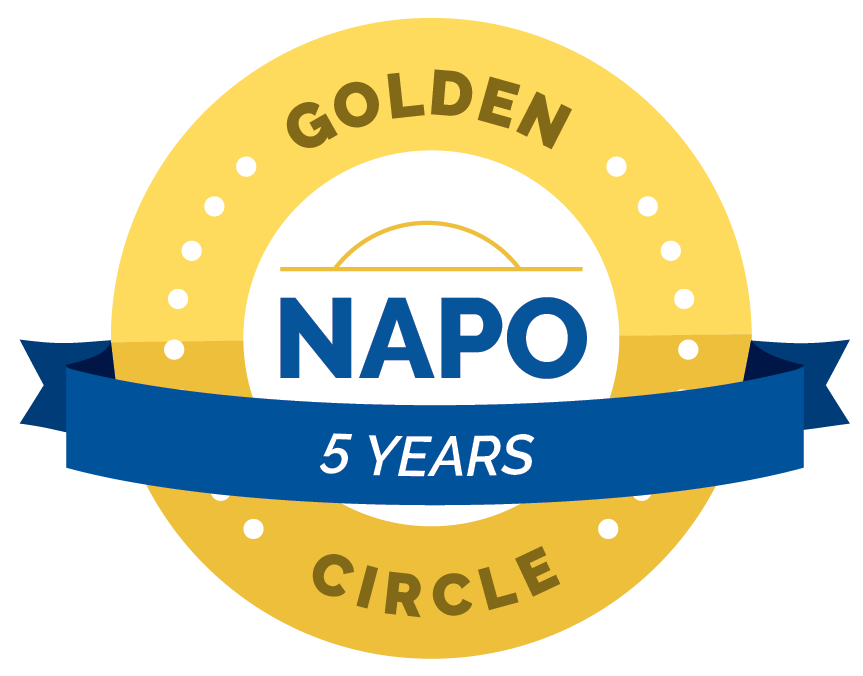
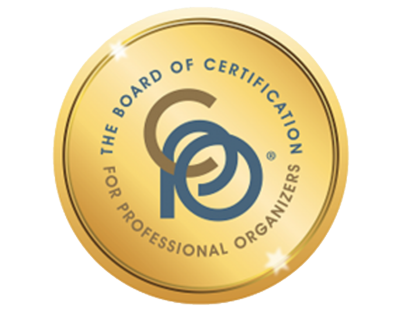

No Comments